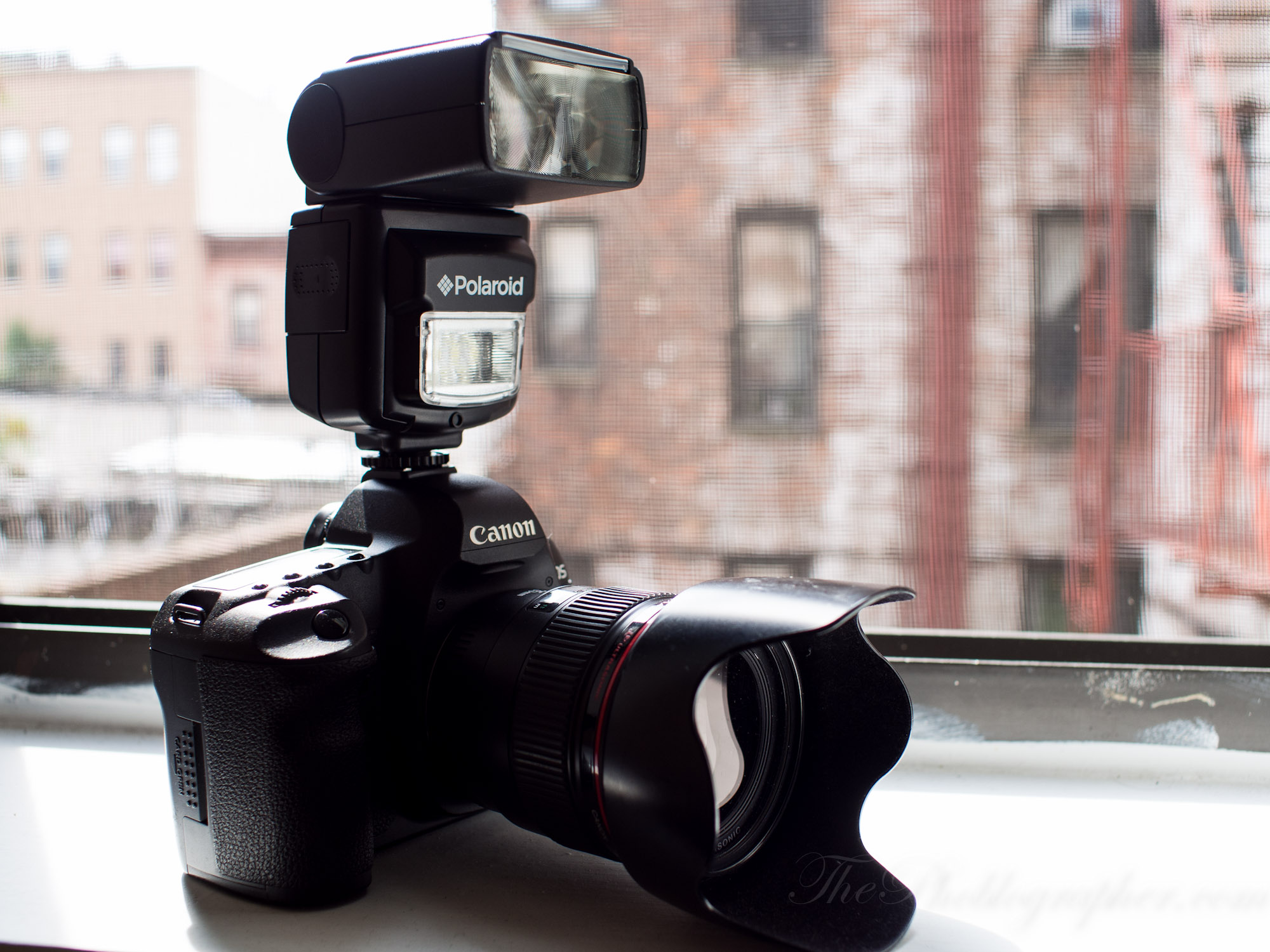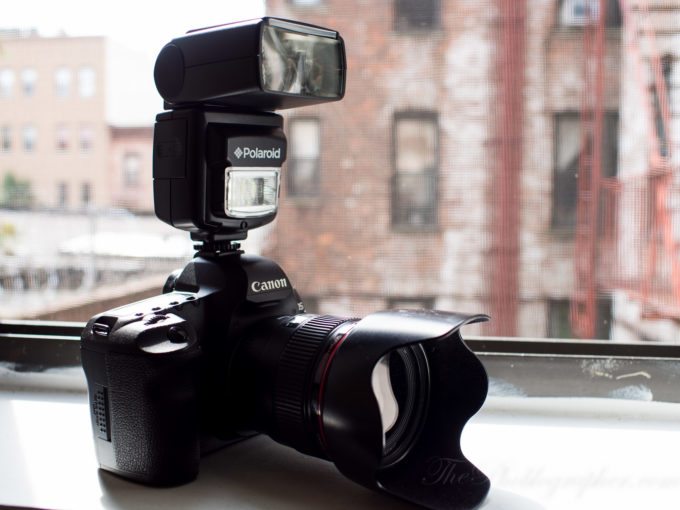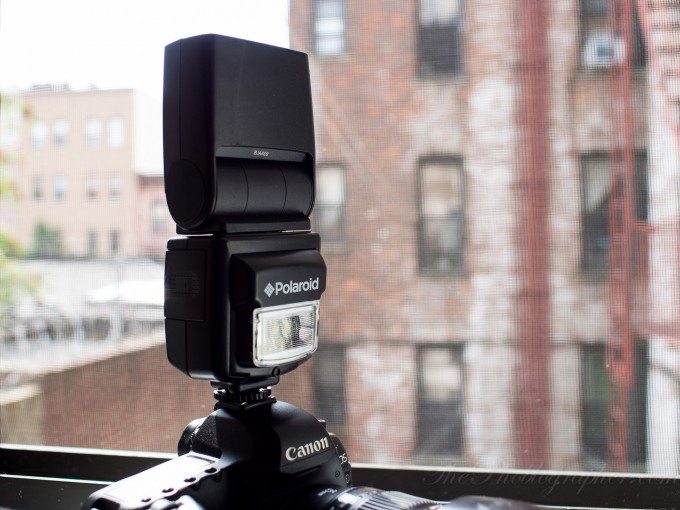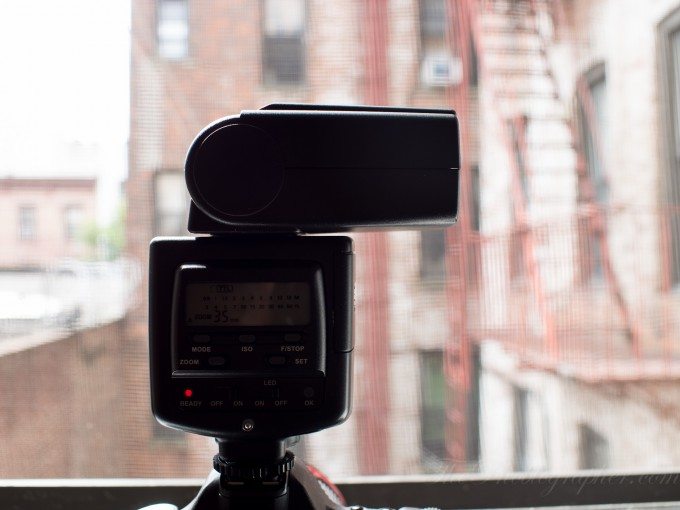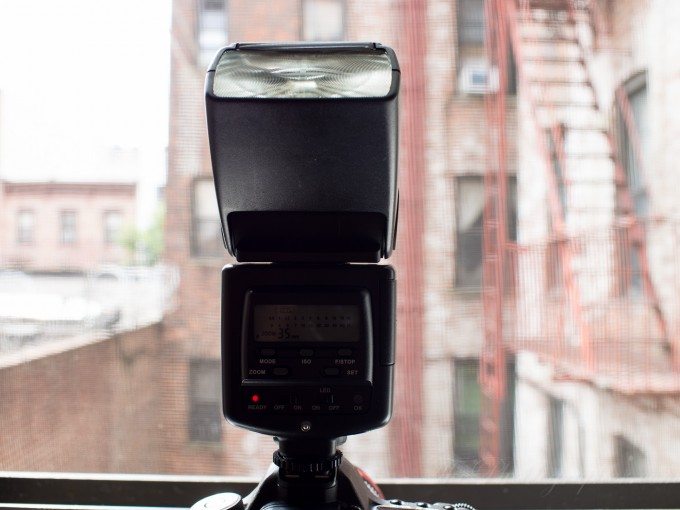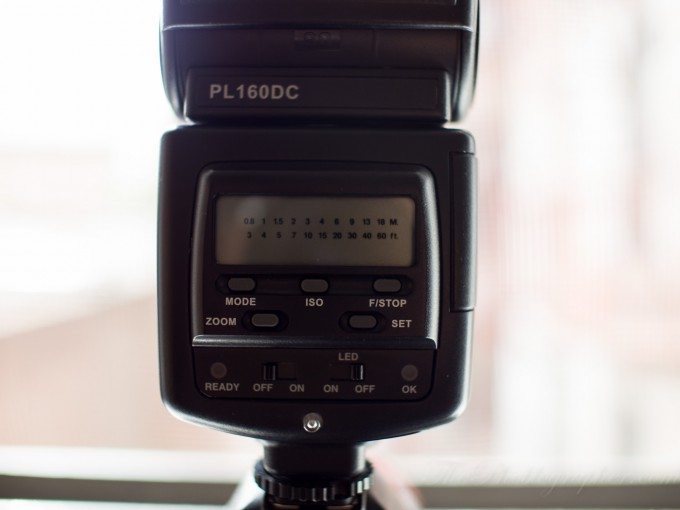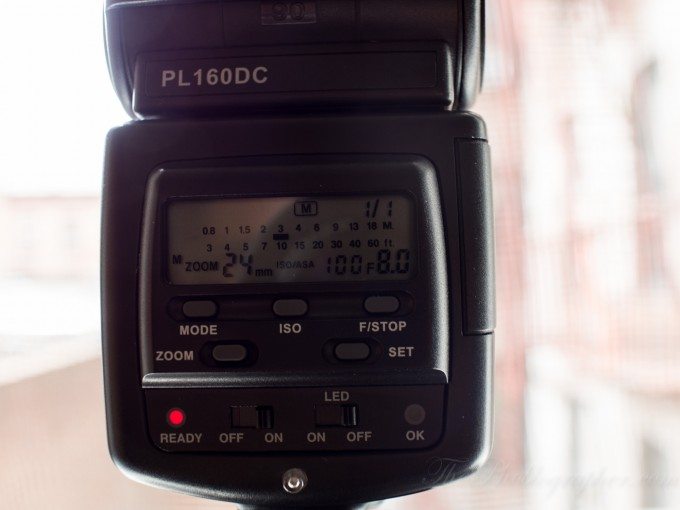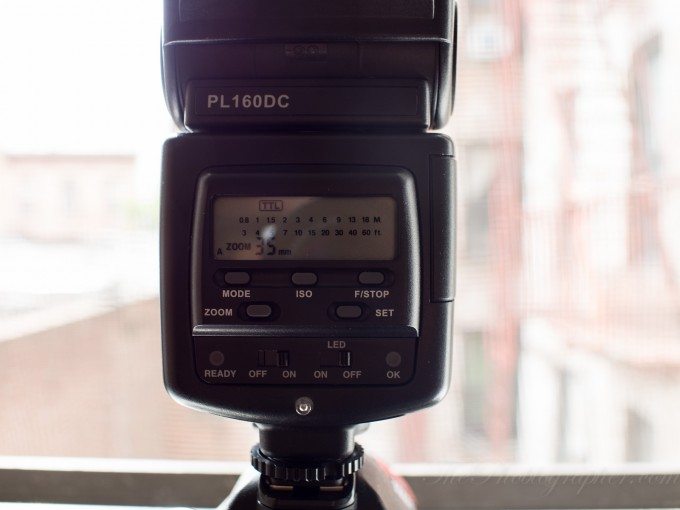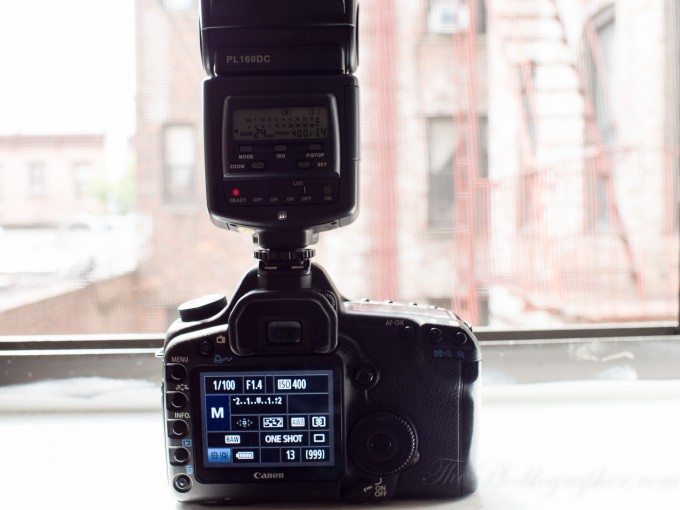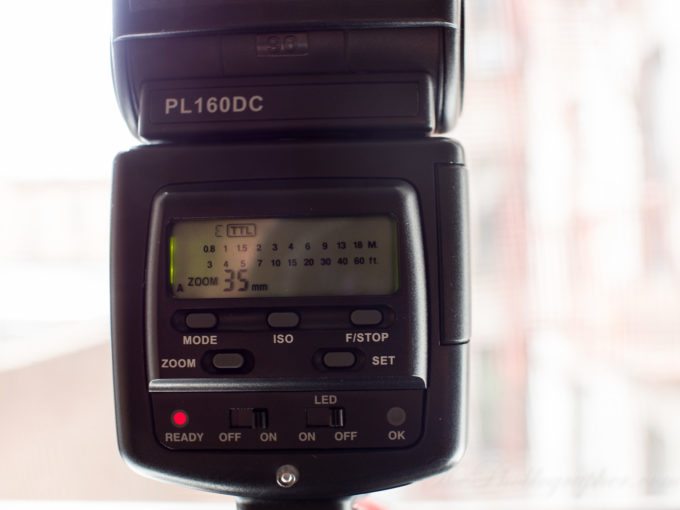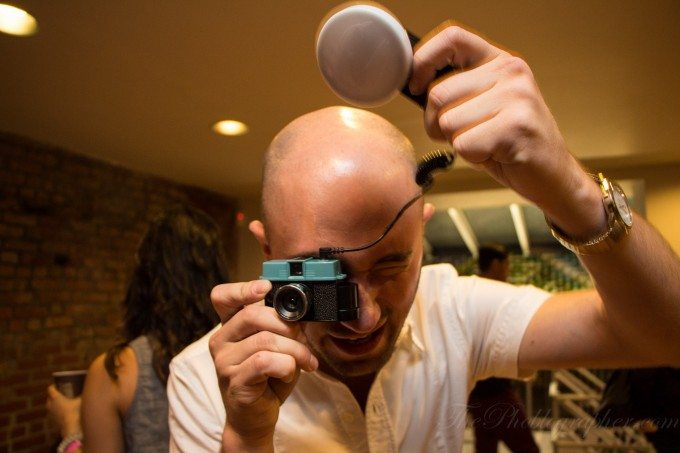Since the decline of Polaroid film, the company has tried to restructure itself to focus on other photography accessories. Announced earlier this year, the Polaroid PL160 seemed like an extremely promising flash for a very affordable price point. Amongst the features are full TTL metering with Canon DSLRs, manual control, and an LED light to be used as both a modeling light or for video. Seems pretty good, right? I mean, what could possibly be wrong with that?
The answer: it depends on how advanced a flash user you are.
Gear Used
Tech Specs
Specs taken from the B&H Photo Video listing
| Mount | Shoe |
| Guide No. | 148′ (45.11 m) ISO100 at 85 mm position |
| Angle of Coverage | 75° – 28° |
| Vari-Power | 1/1 – 1/16 |
| TTL Dedication | Yes |
| Bounce Head | Yes, +0° to +90° |
| Swivel Head | Yes, 270° |
| Coverage | 24 mm – 85 mm (Full frame) |
| Zoom Head | Full frame: 24 mm – 85 mm |
| Off Camera Terminal | None |
| Recycle Time | Approximately 0.5 seconds – 9.0 seconds |
| Power Source | 4x AA Alkaline, Lithium, NiCad, Rechargeable Ni-MH Batteries |
| Dimensions (WxHxD) | 5.2 x 4.0 x 3.0″ / 13.21 x 10.16 x 7.62 cm |
| Weight | 9.5 oz / 269 g Without batteries |
Ergonomics
The Polaroid PL160 flash starts out with lots of the basic functions. Like many flashes before it, it can tilt its head totally upward.
In addition to upward, the head moves in much the same way as the Canon 580 EX II does.
With that being said, it can accomplish a 270 degree field of coverage.
The back of the flash is where all business begins. Here you have the mode button (TTL/Manual), ISO button, F-stop button, head zoom, set, and switches for On/Off or LED.
When you turn the unit on, a new display shows up. You’ve got your focal length zoom in the bottom left, ISO and F stop settings on the bottom right, and other settings up top. Here, we show it in manual; where the user needs to set their ISO and F stop plus output all manually.
In TTL mode, all that is gone for the most part and it becomes much simpler to use the camera. When you autofocus the camera though, all he corresponding information from the camera gets fed into the flash.
This is what it looks like when all that info is fed into the flash.
Lastly, whenever you press the mode button, the LED light comes on. In practice, that won’t be so useful because you’ll need to press it every time in order to see the back display.
Ease of Use
The Polaroid PL160D is fairly simple to use but after a month of use, I still can’t get over one majorly complex problem.
Seriously: who the hell designed these buttons? They are amongst the toughest to push in and use and I don’t have such fat fingers at all.
Additionally, there is also the backlit LCD problem where I need to press the mode button each time.
Here is a list of other quirks I found:
– No optical slave mode. It needs to be used with wireless triggers
– Said triggers must have a hot shoe: good bye PocketWizards Plus III! Additionally, the TTL communication doesn’t seem to be the greatest when I used my Phottix Odins despite it working perfectly with Canon flashes..
– Cannot be used in Stroboscopic mode (which I personally love doing).
– I’ve always needed to manually set the zoom functionality and it won’t automatically set it itself.
– The zoom motors are extremely loud.
In Use
I continually went back to the flash over and over again to try to give it a chance: the Diana Baby party being one of them. And at that moment, it seemed the flash wasn’t for me; but I still needed to test it out more at the time.
I set up a bunch of situations: the first one was with my Phottix Odin TTL triggers. By far, these are what I believe should be the industry standard radio triggers over even those from PocketWizard. With all of my Canon flashes, TTL and manual communication was not issue at all. Then I put the Polaroid flash on.
Despite the fact that the flash has full Canon TTL contacts, it didn’t work in TTL at all. I thought that there was some sort of problem, so I used Isopropyl alcohol to clean the contacts. The problem persisted. In addition, when I switched focal lengths, the flash didn’t take the information sent correspondingly from the Phottix transmitter.
At that point, I thought that maybe there was an issue with my triggers. So I switched to Syl Arena’s OCF Gear TTL cord. Unfortunately, the same issue persisted to happen although after every third photo, there seemed to be some sort of focal length, ISO and F-stop communication. While the problem seemed to improve with a TTL cord, it is way too persistent for me to want to use it off-camera (which is my preferred method.) In order for you to best use this flash, it absolutely must be put in the hot shoe for direct communication. Then, it performs just like any TTL flash would and should.
To absolutely ensure that I had tested all of the problems, I tested this flash/cord/trigger combination on four different cameras: the Canon 5D Mk II, 5D Mk II, Rebel T4i, and Rebel T2i. The problem was consistent. In fact, the inconsistent problems that this flash has annoyed a model I shot.
Conclusions
Why isn’t it for me? I’m an extremely advanced flash user: I set up strobist situations, and I love multiple off-camera stroboscopic shooting. This flash clearly is not advanced enough to keep up with my needs and I’ve even moved into Monolights at this point too.
However, this flash would be much more for the casual flash user that may also need LED light for video.
In the end though, I can’t begin to tell you have much frustration this flash caused me. It didn’t come with a user manual either and I couldn’t find a ton of info about it. Modern flashes are typically designed in many ways to be used both in the hot shoe and off the shoe.
If Polaroid wants to design a better flash for both stills and video, I highly suggest that they look at what Sony is doing.
Please Support The Phoblographer
We love to bring you guys the latest and greatest news and gear related stuff. However, we can’t keep doing that unless we have your continued support. If you would like to purchase any of the items mentioned, please do so by clicking our links first and then purchasing the items as we then get a small portion of the sale to help run the website.


